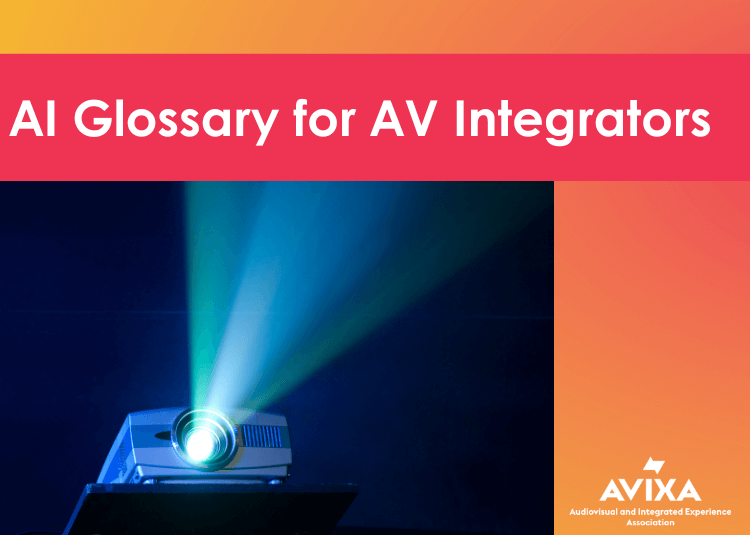News & Trends
Generative Artificial Intelligence: the Solution for Conferencing Tech Growing Pains
Based on a steady and growing drumbeat by employers and local municipal governments for workers to return to the office, I concluded last week that the idea of a permanent hybrid workforce might be showing cracks along the edges. While there is plenty of evidence to the contrary, a soft quarter from industry darling ZOOM hints at what may be a slowdown in the video conferencing market. Though remote work and conferencing technology are intricately connected, they are not mutually exclusive. Video conferencing applications are notoriously cumbersome, especially for new users, and the industry may be resetting as it adjusts its collective technology framework to make products more user-friendly and advanced.
"Videoconferencing and collaboration vendors like Zoom have been reporting a sharp decline in business this year," says Rob Enderle, president and principal analyst at the Enderle Group. "It's been recurring in the industry for decades, a boom followed by a bust."
Enderle references early investments in the field that eventually either failed or declined significantly - from Intel CEO Andy Grove, who invested heavily in the technology in the 1990s and then said it was one of his biggest mistakes, to HP's Halo rooms that were initially met with excitement before quickly fading. As a result of the COVID-19 pandemic, interest in video shot up again (out of necessity) and there has been a decline in the demand for video as the pandemic has waned. This cycle of excitement and decline is likely due to changing work environments. However, the fact that the technology and its applications are still relatively new might also explain this ebb and flow. As technology improves and new use cases are identified, enthusiasm for it will likely increase again.
"There's a chance the market won't pull back this time as sharply as it did in the past, but until the industry steps up to ... make the technology sustainable, videoconferencing will never reach its full potential," warns Enderle.
Enderle points to several issues the industry must address before it can reach its full potential.
Users Still Find Conferencing Technology Difficult to Use.
Despite being the primary drivers of successful technologies, videoconferencing often overlooks ease of use and interoperability. Moreover, users have complained of laggy connections and poor sound quality, further exacerbating the negative perception of the technology.
There is Still More Value in In-Person Conversations.
Meeting in person allows you to engage with the person across from you, make a comment, and force yourself to be heard. In remote sessions, you're often muted until someone lets you talk. Remote meetings can be difficult because reading the room or the people you are speaking with is hard. It can be difficult to tell whether the person is engaged or just quietly listening. Knowing when to jump in or stay quiet is also more work. A direct message (which the other person may not see) or a phone call will be your only options for chatting with someone else.
Is Generative AI the Solution?
Artificial intelligence in AV is nearing its Rubicon. These new frontiers are the culmination of years of development in machine learning algorithms and advances in AI-focused computer chips. Combined with familiar user interfaces, this technology is quickly becoming understandable to non-technical people and will soon be in a teleconferencing meeting you take part in. How?
We've been hearing for several years now how the metaverse allows us to attend meetings virtually as though we're there. This is being accomplished via avatars and, more impressively, holograms. The former is old hat now for experienced conferencing software users, and the latter might still be in the realm of science fiction for most of us but is quickly becoming a reality. Generative AI promises an entirely new set of tools within your presentation software. With this technology, your sales pitch can be enhanced seamlessly, in real-time, and in response to attendees' questions and comments. Predictive features can even anticipate new comments and questions based on your presentation and prepare you to address them before they're raised.
Two features just over the generative AI horizon are "vubbing" and eye-gaze correction for live streaming events. By vubbing, AI software changes the apparent movements of people's lips while translating their words into another language almost simultaneously. This will enable people from different countries to understand each other in real time and have conversations without the need for an interpreter.
Eye-gaze correction alters the apparent direction of people's eyes, so they appear to be looking directly through the camera at the viewer on the other end of a videoconferencing call. This allows the person on the other end to feel as though they are being directly engaged, creating a more natural connection.The benefits of videoconferencing have already been shown to reduce travel costs and create more productive work environments, but AI is promising to smooth out some of the software's rough edges. Crossing this threshold opens the door to the exciting possibilities of AI-driven automation and enhanced decision-making, ushering in a new era of technology.















